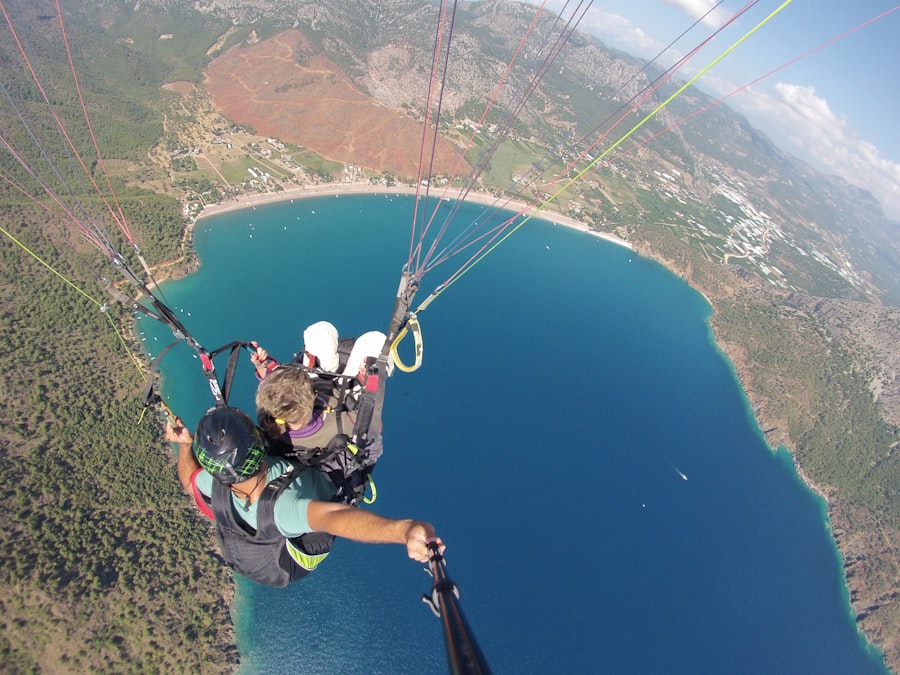Download links
如何安装Pushing the Limits: Extreme Sports with tg777 APK?
1. 点击已下载的[标题] APK文件。
2. 触摸安装。
3.按照屏幕上的步骤进行操作。
Description
Extreme sports, often characterized by their high levels of risk and adrenaline, have captivated thrill-seekers and spectators alike. These activities, which include everything from base jumping and rock climbing to snowboarding and motocross, push the boundaries of human capability and endurance. The allure of extreme sports lies not only in the physical challenges they present but also in the mental fortitude required to engage in them.
Participants often find themselves in breathtaking environments, whether scaling a sheer cliff face or navigating treacherous whitewater rapids, where the stakes are high and the rewards can be exhilarating. The rise of extreme sports can be traced back to the late 20th century when traditional sports began to evolve into more adventurous forms. The emergence of skateboarding and BMX biking in the 1970s laid the groundwork for a culture that embraced risk-taking and nonconformity.
As these activities gained popularity, they paved the way for a broader spectrum of extreme sports that would capture the imagination of a generation. Today, extreme sports are not just niche activities; they have become a global phenomenon, with millions of enthusiasts participating and a thriving industry built around them.
Key Takeaways
- Extreme sports are high-risk, high-adrenaline activities that push the limits of physical and mental capabilities.
- The adrenaline rush experienced in extreme sports can lead to a sense of euphoria and accomplishment.
- While extreme sports offer rewards such as personal growth and overcoming fears, they also come with inherent risks that can lead to serious injury or even death.
- The evolution of extreme sports has seen athletes constantly pushing the boundaries of what is possible, leading to new and more extreme activities.
- Safety measures and proper training are crucial for participants in extreme sports to minimize the risks involved and ensure a safe experience.
- The future of extreme sports is likely to see continued innovation and the emergence of new trends as athletes continue to push the limits of what is possible.
The Adrenaline Rush of Extreme Sports
At the heart of extreme sports is the adrenaline rush that participants experience. This physiological response is triggered by the body’s fight-or-flight mechanism, releasing hormones such as adrenaline and cortisol into the bloodstream. For many athletes, this rush is addictive; it creates a heightened sense of awareness and an exhilarating feeling that is hard to replicate in everyday life.
Whether it’s the thrill of free-falling from a plane during skydiving or the intense focus required to navigate a challenging mountain bike trail, the adrenaline rush serves as a powerful motivator for individuals seeking to push their limits. Moreover, the adrenaline rush is often accompanied by a sense of accomplishment and empowerment. Successfully completing a challenging climb or conquering a difficult course can lead to increased self-esteem and confidence.
This psychological aspect is crucial, as it encourages individuals to set new goals and strive for greater achievements. The community surrounding extreme sports also plays a significant role in amplifying this experience; sharing triumphs and challenges with like-minded individuals fosters camaraderie and support, further enhancing the overall thrill of participation.
The Risks and Rewards of Extreme Sports

Engaging in extreme sports inherently involves a degree of risk that can lead to serious injury or even death. The dangers associated with these activities are multifaceted, ranging from environmental hazards like unpredictable weather conditions to equipment failures and human error. For instance, rock climbers face the constant threat of falls, while surfers must contend with powerful waves and potential encounters with marine life.
Despite these risks, many athletes are drawn to extreme sports precisely because they challenge conventional boundaries and offer unique experiences that cannot be found in more traditional pursuits. The rewards of extreme sports can be substantial, both physically and mentally. Participants often report improved physical fitness, enhanced coordination, and increased mental resilience as they confront their fears and push through challenges.
Additionally, extreme sports can foster a profound connection with nature, as many activities take place in stunning outdoor settings. This connection not only enriches the experience but also promotes environmental awareness among athletes who often become advocates for conservation efforts. Ultimately, while the risks are significant, the potential rewards—both personal and communal—can make extreme sports an appealing pursuit for many.
Pushing the Limits: The Evolution of Extreme Sports
| Extreme Sport | Participants | Risk Level |
|---|---|---|
| Big Wave Surfing | 1000+ | High |
| BASE Jumping | 1000+ | Extreme |
| Free Solo Climbing | 500+ | Very High |
| Wingsuit Flying | 1000+ | Extreme |
The evolution of extreme sports has been marked by innovation and creativity as athletes continuously seek new ways to challenge themselves. In recent decades, we have witnessed the emergence of hybrid sports that combine elements from various disciplines, such as slacklining—a blend of tightrope walking and balance training—or parkour, which emphasizes fluid movement through urban environments. These new forms not only expand the definition of what constitutes an extreme sport but also attract diverse participants who may not have previously engaged in traditional activities.
Technological advancements have also played a pivotal role in shaping the landscape of extreme sports. The development of specialized gear—such as lightweight climbing equipment, advanced snowboards, and high-performance mountain bikes—has enhanced safety and performance capabilities. Drones equipped with cameras have revolutionized how athletes document their experiences, allowing for stunning aerial footage that showcases their skills while inspiring others to take up similar challenges.
As extreme sports continue to evolve, they reflect broader cultural shifts towards individualism and self-expression, encouraging athletes to carve out their unique paths within this dynamic realm.
Safety Measures and Training for Extreme Sports
While the thrill of extreme sports is undeniable, safety remains a paramount concern for participants and organizers alike. Comprehensive training programs are essential for anyone looking to engage in these activities safely. Many extreme sports organizations offer courses that cover essential skills, risk management strategies, and emergency response techniques.
For example, aspiring rock climbers often undergo extensive training that includes learning about proper belaying techniques, knot tying, and understanding climbing routes before attempting more challenging ascents. In addition to formal training programs, safety measures such as wearing appropriate protective gear are critical in minimizing risks associated with extreme sports. Helmets, harnesses, pads, and specialized footwear can significantly reduce the likelihood of injury during high-impact activities.
Furthermore, many athletes emphasize the importance of understanding one’s limits; recognizing when conditions are too dangerous or when one is not adequately prepared can be crucial in preventing accidents. By prioritizing safety through education and proper equipment, participants can enjoy the exhilarating aspects of extreme sports while mitigating potential hazards.
The Future of Extreme Sports: Trends and Innovations

As we look toward the future of extreme sports, several trends and innovations are poised to shape its trajectory. One notable trend is the increasing integration of technology into training and performance assessment. Wearable devices equipped with sensors can track vital statistics such as heart rate and oxygen levels during high-intensity activities, providing valuable data that athletes can use to optimize their performance and recovery strategies.
Virtual reality (VR) is also making waves in this space; it offers immersive training experiences that allow athletes to practice skills in simulated environments before attempting them in real life. Another significant trend is the growing emphasis on inclusivity within extreme sports communities. Organizations are increasingly recognizing the importance of making these activities accessible to individuals with disabilities or those from diverse backgrounds.
Adaptive sports programs are emerging that cater specifically to individuals with physical challenges, enabling them to participate in activities like adaptive surfing or wheelchair motocross.
In conclusion, extreme sports continue to captivate individuals around the world through their unique blend of risk, reward, and community spirit.
If you’re a fan of extreme sports, you may also be interested in checking out the article on Mastering Online Football with TG777: A Winning Guide. This article provides valuable tips and strategies for excelling in online football games, which can be just as thrilling and adrenaline-pumping as extreme sports. Whether you’re into extreme sports or virtual sports, TG777 has something for everyone.
FAQs
What are extreme sports?
Extreme sports are activities that involve a high level of risk, adrenaline, and physical exertion. These sports often take place in challenging environments and require specialized equipment and skills.
What are some examples of extreme sports?
Some examples of extreme sports include skydiving, base jumping, rock climbing, snowboarding, surfing, whitewater rafting, and mountain biking.
What are the risks associated with extreme sports?
Extreme sports carry a high risk of injury or even death due to the nature of the activities and the challenging environments in which they take place. Participants must be aware of and prepared for these risks.
What safety measures should be taken when participating in extreme sports?
Participants in extreme sports should always use proper safety equipment, undergo thorough training, and be aware of their own physical limitations. It is also important to be aware of weather conditions and other environmental factors that could affect safety.
Are there any organizations or governing bodies for extreme sports?
There are several organizations and governing bodies that oversee and regulate various extreme sports, such as the International Skydiving Commission, the International Surfing Association, and the International Federation of Sport Climbing.
What are the benefits of participating in extreme sports?
Participating in extreme sports can provide a sense of accomplishment, an adrenaline rush, and an opportunity to push personal limits. It can also promote physical fitness, mental resilience, and a connection to nature.





